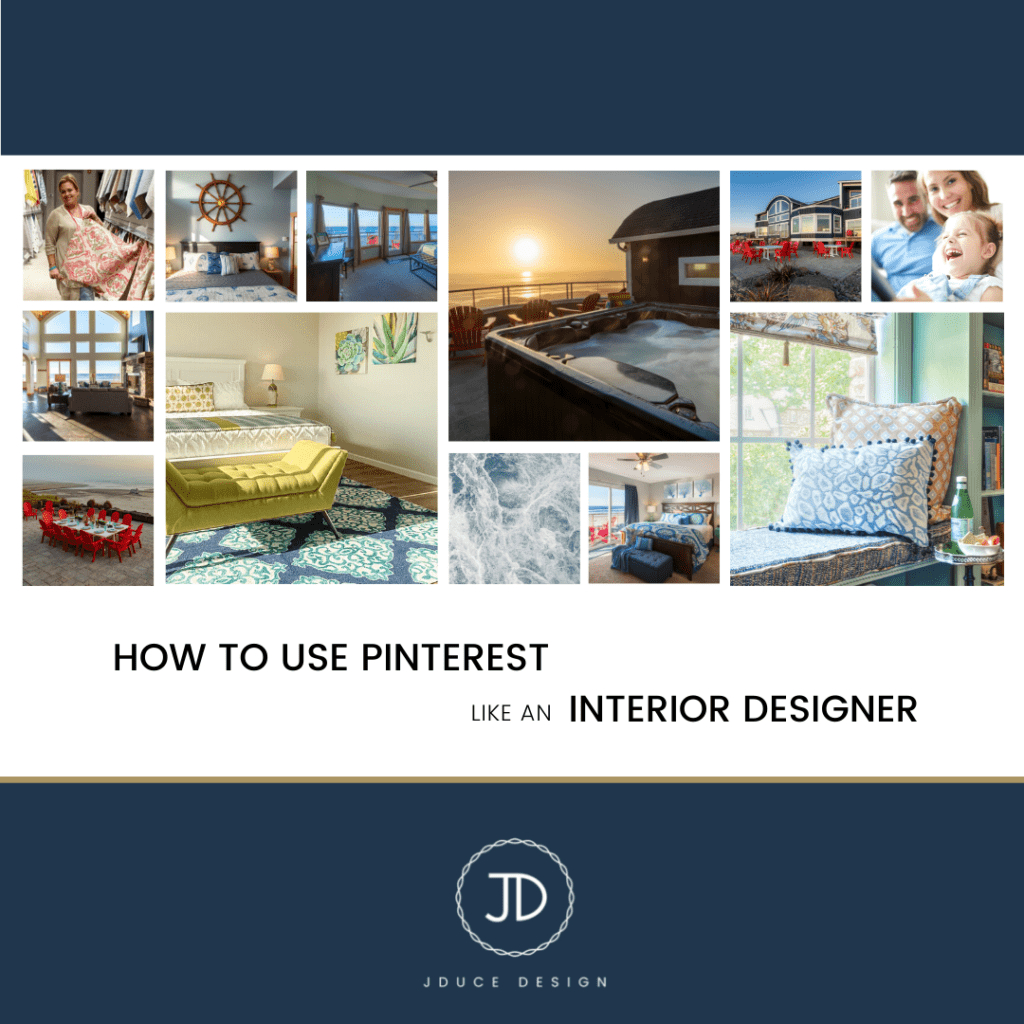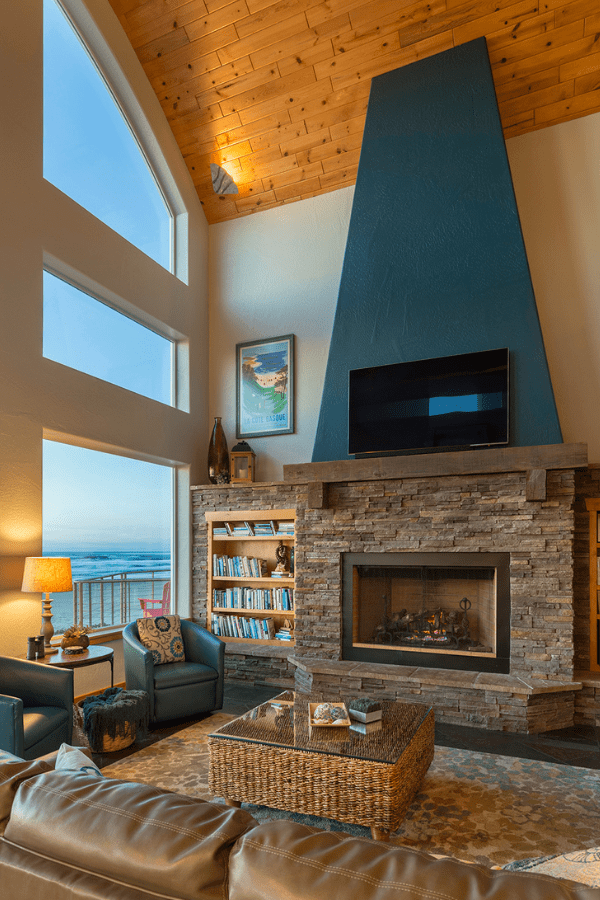You’re ready for a home that feels like you. It’s going to be full of color, softened by drapery and pillows, and that chandelier you fell in love with last week? That’s a must! But wait… you just remembered you’re not the only one in the house…
As it turns out, your spouse has a very different idea of what your home is going to look like. That chandelier? Not into it. Bright colors? Black, please. Fluffy pillows? Crickets…
Now, add your kids to the mix, and you have a whole ‘nother group of voices, opinions, and personalities to represent!
Corralling the family’s preferences into one design might sound like an impossible headache, but in my books, it’s my dream job. Yes, the one I get to do every day! There is something so special about creating spaces that blend a couple’s or a family’s styles into one beautiful design that feels like home. (A client recently nicknamed me “Room Whisperer” for this reason. Lol.)
In fact, I’ve worked with a lot of blended families, and I think that homeyness is doubly powerful. A harmonious, all-inclusive design helps everyone feel like they belong to the new family. How incredible is that? I love design, but it isn’t all about “pretty” — it’s about people!
Okay, enough storytelling for now (or I’ll get on a roll here). Let’s talk about YOU.
Step 1: Define Your Style

Let each person in your family have a voice about what they love, what they want in their personal spaces, and how they would like to live in any common spaces.
To guide you in how to mix design styles in your own home, I’m going to take you through the same process we use with our clients. Up first: what the heck even is your design style?
Good question. You might be tempted to say “modern,” “contemporary,” or even “rustic,” but these labels are less helpful than you might think. Not only do they mean different things to different people, but I have yet to meet someone who falls into just ONE camp. To understand your style in a way to actually implement it, you need specifics and visuals. Which brings me to the methods we use at JDuce Design…
Give Your Family Members the Style Quiz
I have a quick quiz that I ask clients to take before we meet. It includes asking what styles they like, preferred colors, hobbies, what time of day is their favorite? Do they like things put away or not? Does a pile of shoes at the door bother them or not? Any pets? How social are they? How many people do they want at their dinner table? How many people do they hope to entertain in the living room. Do the kids need to be able to accommodate sleepovers? Do we need to keep in mind the child’s bedroom at the other residence if we’re working with a blended family? Etc.
Notice how most of this questions are related to the function of the space? That’s because style and selection always follows the way you want to use your space!
You can ask yourself and your family members these same questions to get to the bottom of their style and LIFEstyle.
Find an Inspiration Piece
Lastly, I always ask our clients what their favorite item is and why. The answer to this question is usually very telling. Maybe it inspires joy, or memories, or conversation, even a behavior (maybe you interact with this item). It doesn’t even have to be home decor. I once designed an entire room inspired by a brooch inherited from the clients’ grandmother!
Point is, when you can find a meaningful inspiration piece (especially if your family members can agree on it), it can guide you toward the color palette, the style, and above all — the feelings you want from your home.
This cheeky piece of art was our inspiration piece for this breezy bathroom with black accents and a warm wood that help our leading lady take center stage!
Use Pinterest Like an Interior Designer
Have you met Pinterest? Of course, you have. It’s a global phenomenon! You may be surprised to hear that even designers use Pinterest to gather inspiration from clients. We can look at your Pinterest board (and your family members’ boards) to pick out the design themes that each person loves.
You can do the same with each member of your family — and take notes!
Step 2: Set the Design Direction
Once each person has weighed in on what they like (and don’t like), we create a project Pinterest board, where we start to plan the room itself, and yes, mix design styles. We include images that show bits and pieces of each person’s tastes.
For example, if one family member likes clean modern lines, and the other loves traditional details and curves, we can incorporate both into the Pinterest board (and design concept) in a tasteful way.
This sets the design direction for their specific project. We then keep this board organized in their shared design portal with me so we always have reference points as the project progresses.
This is the hardest part for non-designers. I suggest downloading my Guide to Using Pinterest Like an Interior Designer for some additional help (coming soon). Or, work with an interior designer on this part for the surest path to success.

Coming soon!
Step 3: Mix Design Styles by Blending Old & New
In my long design career, it has been very rare that an entire home has gotten all new fixtures and furnishings. And when we’re talking about blending different family members’ styles, I actually encourage you NOT to design with all new purchases.
Using older pieces helps preserve each family members’ identities. Sprinkling in new pieces and an up-to-date color palette helps freshen up the home and give it some new life. So, how can you do it?
Inventory the Old
Once you’ve set the design direction for your project, take inventory of the items you already have in your home — and not just in the same room. (You never know what could be hiding in another room waiting for a new lease on life.) Make your list, have your Pinterest board and style discoveries in front of you, and then work through the following questions:
- Which of your pieces look like they could fit into the final design?
- Which of your pieces should definitely NOT be included in the final design?
- Of the items you’ve green-lighted, is everyone in the family represented by something they love?
Invite in the New
So, you landed on the items you’d like to keep… now, you have to decide how they will be used in the design and what you need to bring in new. (I recommend doing this part before you donate/give away any no-go items. You may have a change of heart!)
- How could you spread the winning items around the room to create a space plan? Do they work together stylistically? Functionally?
- What pieces are missing from the space plan and need to be brought in new? (Such as a sofa, window treatments, end tables, etc.)
- Based on your Pinterest board, what styles, shapes, or colors should your new items bring into the room?
- What accessories would blend everyone’s styles together? (Accessories are key!)
These questions will help you create a purchase list for new items that help you bridge the design styles and create a room that reflects everyone, feels homey and chic, and functions well.

I love how this room we designed balances masculine touches (metals, dark bed frame and flooring) with feminine ones (soft drapery, organic shapes) for a soothing yet grounded result.
Avoid a Family Battle with Some Fun Games of Compromise
The newly married couple that nicknamed me “Room Whisperer?” Here’s their story…
The husband (let’s call him Dan) liked clean lines, minimalism (very little of anything around the house), and was attracted to masculine sci-fi looking rooms. The wife, Rachel, well… complete opposite. She liked STUFF. She wanted the home to be warm and homey, and to her, this translated to pillows, layers, and accessories.
To mix design styles, we got creative with some fun games of compromise…
- Rachel got to add 3 things to a room. Dan got to edit 1 out.
- We gave each of them a black and white sketch of the main room and asked them to “color it in” with some colored pencils we had given them. Surprise! They picked the same colors! And that became our palette.
- They each had a specific space that was all theirs. Rachel chose the laundry room and guest room. Dan chose the office/den (and we gave him complete creative (sci-fi) freedom over the garage). This meant they were both happier compromising on the main area.
- In the main living areas, we kept the space mostly clear for Dan, and put extra blankets, magazines, and tchotchkes in decorative boxes and baskets for Rachel. So they were “hidden” and organized, but Rachel had them close enough to feel cozy.
See? Everybody wins!

I don’t have pictures of Dan and Rachel’s space (sadly), but here’s a home we designed that strikes a great balance between modern (chairs, sleek extended chimney, angular windows) and coastal (palette, natural stone, wood, and wicker). Mixed styles are my favorite!
Final Tip on How to Mix Design Styles
When you mix design styles isn’t just about the finished result — it’s also about how you get there.
I truly believe my superpower is to listen to my clients and create a space that THEY feel comfortable and beautiful in. It’s finding compromise that doesn’t make each “side” feel like they lost, but like they won.
If you’re doing this exercise with your own family, first, pour yourself a cocktail. Just kidding! Mostly… 😉 Whether you have a cocktail in hand or not, I encourage you to have fun with it, involve everyone, and, if things are getting difficult, hire an interior designer.
Even if you don’t want full-service interior design, getting a professional design concept can mean the difference between a home that feels disappointing and one that inspires you to smile every day, make memories, and connect.
Done well, this process really can bring you closer as a family. And that’s what design is all about.
xoxo,
Jessica[/vc_column_text][/vc_column][/vc_row]


